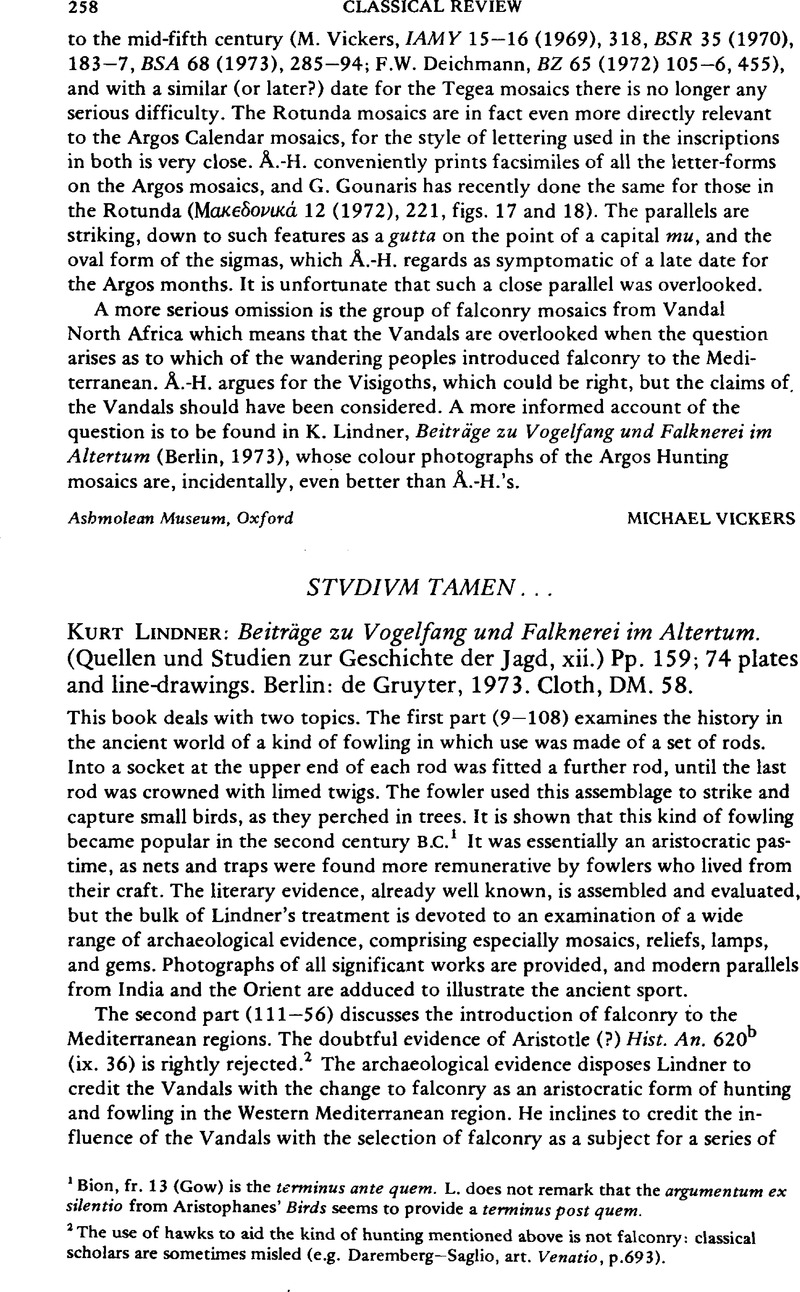No CrossRef data available.
Article contents
Stvdivm Tamen… - Kurt Lindner: Beiträge zu Vogelfang und Falknerei im Altertum. (Quellen und Studien zur Geschichte der Jagd, xii.) Pp. 159; 74 plates and line-drawings. Berlin: de Gruyter, 1973. Cloth, DM. 58.
Published online by Cambridge University Press: 27 February 2009
Abstract

- Type
- Reviews
- Information
- Copyright
- Copyright © The Classical Association 1976
References
1 Bion, fr. 13 (Gow) is the terminus ante quem. L. does not remark that the argumentum ex silentio from Aristophanes' Birds seems to provide a terminus post quem.
2 The use of hawks to aid the kind of hunting mentioned above is not falconry: classical scholars are sometimes misled (e.g. Daremberg–Saglio, art. Venatio, p.693).
3 These mosaics have recently been discussed by Åkerström-Hougen, Gunilla in The Calendar and Hunting Mosaics of the Villa of the Falconer in Argos (reviewed above, pp. 256 ff.)Google Scholar.
4 Ἔκφρασις ε⋯κ⋯νος ⋯ν τῇ π⋯λειτνΓαζα⋯ων κειμ⋯νης 26; cf. Friedländer, Paul, Spätantiker Gemaläezyklus … des Prokopios von Gaza, Vatican City 1939, pp. 63 fGoogle Scholar. This work is in rhythmic prose, and is not a ‘Gedicht’, as Lindner (149) terms it.




